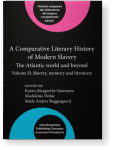Chapter 8
Looking at black bodies in pain
In March 2017 a painting by Dana Schutz sparked a hot discussion on cultural appropriation and
censorship, but the real issue was the racial politics and epistemology of black pain on display. My chapter deals
with the current circulation of images of enslaved black bodies in pain that is central to the contemporary
rememorying of slavery, investigating the possibility of a counter-visuality of the black body in the context of the
history of spectacularity of black pain. It analyzes strategies by contemporary artists who narrate the past as an
incomplete project of freedom, through works that speak to and of the present, revisiting the visual archive of
slavery in order to transform it into “the no-place of a utopia” (Foster
2004).
Article outline
- Who owns black pain?
- The visuality of black suffering
- Suffering on display
- The cultural configuration of black pain
- Afterimages and the ocular grammar of slavery
- Coda
- Author queries
-
Notes
-
References
This content is being prepared for publication; it may be subject to changes.
